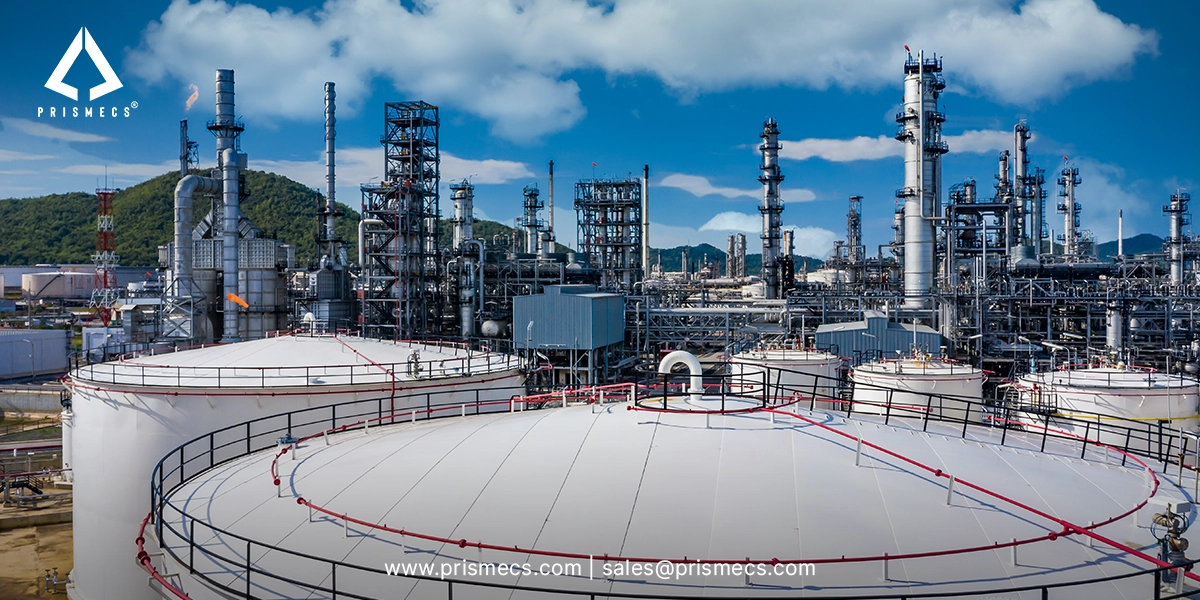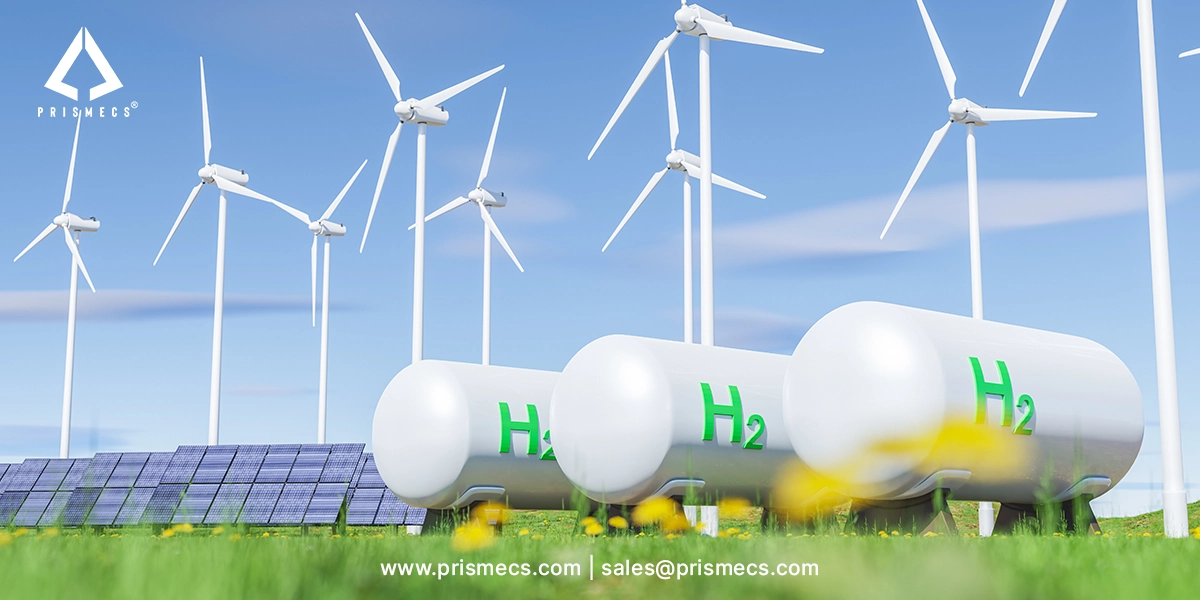
The use of offshore wind, nuclear, steam, and hydroelectric energy plays a significant role in future energy supply. Maintenance is much more susceptible to limiting factors, as turbines are built deeper and at a wider distance as compared to other offshore projects already underway.
Limited availability of ships, reliance on meteorological environmental conditions such as wave height, wind speed, and complex logistic process chains require the coordination of already used maintenance concepts.
For this purpose, oil and gas power plants always focus on a cost-effective and reliable supply of spare parts. This article will describe seven factors to consider for efficient turbine spare parts management.
Introduction to turbine spare parts management
Turbine spare parts management is the foundation of reliable oil and gas power plant operation and is essential to the success of plant operators. Operation managers need to know the turbine spare parts needed to build an effective and comprehensive inventory system. Rather than using perception to determine what is needed, it is best to develop these strategic ways to properly manage inventory movement and storage.
- Strategy to operate turbine spare parts
- Cause of out of stock
- Inventory control
- Leads time
- No exception for new equipment
- Risk calculation
- Choose reliable suppliers for turbine spare parts
These are several factors to consider when developing or reviewing a turbine spare parts management system. Taking these factors into account can minimize service interruptions, increase efficiency, and reduce shipping costs. In the end, the management of spare parts will be successful.
1. Strategy to operate turbine spare parts
Turbine spare parts managers act proactively or reactively. Most companies build management strategies after reactive events. To properly manage turbine spare parts inventory, managers need to adopt a proactive strategy. Responsive management is useful in times of crisis, but the essence of successful management is the ability to prevent problems before they occur.
Predictive management of turbine spare parts includes the ability to collect and analyze data. It also involves the ability to view the full range of operations to identify and resolve key problems that may occur in the long run. When collecting and analyzing data, be sure to look for error patterns that can find problems that are not apparent. Proactive management allows you to use your resources better and save time and money in troubleshooting.
2. Cause of out of stock
It is impossible to solve the annoying problem of being out of stock without investing in spare parts. However, you can limit the operational impact by trying to identify the root cause of your inventory. Start recording the reasons for out-of-stock turbine spare parts in real-time. Also, check the forecast demand and look for parts that may have incorrect order settings. Keep in mind that the most common cause of out-of-stock is delays that can occur within the supply chain (internal/external).
3. Inventory control
The inventory of turbine spare parts does not have to be comprehensive to be effective. It is impractical to keep a large number of different parts in stock. For better inventory management, create clear criteria to help define and classify spare parts. Labels such as “important” spare parts help prioritize inventory.
Be aware that such terms are multidimensional and we can further refine them. For example, we can mark a part as important for operation or as important for a particular mechanical function. Depending on the risks and impacts of a failure, one designation may take priority over another.
You need to regularly classify all turbine spare parts (ie, important and non-important), as the classification of parts can change over time based on the spares/replacements that may be available. Regularly checking for excess inventory of turbine spare parts can also help reduce costs.
Proper storage and organization of turbine spare parts in specific safe locations also help warehouse management. If you remove a part without recording it, you cannot reorder it. We cannot take it into account while placing new inventory on shelves without records. Storage and checkout system reviews and analyses can reveal reasons for inventory inaccuracies.
4. Lead Time
A complete understanding of turbine spare parts lead times is critical to the success of your stock program. When it comes to which parts are in stock, lead times are especially critical. If downtime is not important to your company, you can exclude turbine spare parts readily available from your stockpile. However, if a loss of production time results in a significant financial loss to your business, a day or two without parts can be too long. Many turbine spare parts with long lead times are made to order and do not offer speed-up options. Therefore, it is best to keep parts with long lead times in stock.
Out-of-brand components that are available more quickly can be a viable alternative in times of crisis. However, for certain devices, these replacement spare parts can further damage the device or system.
5. No exception for new equipment
We often hear the opinion that our equipment is just installed, and new and no spare parts are needed. It sounds logical for many reasons, but this idea is wrong. Vendors are also expected to provide high-quality parts that are fully functional. Unfortunately, parts often fail at first.
When commissioning new equipment, it is very important to have the proper turbine spare parts at hand. If a part is found to be defective, you can minimize downtime by replacing it with a spare part immediately.
Make sure your budget includes spare parts funding. Equipment vendors can also provide a list of recommended turbine spare parts. The delivery date may be stated for each part. This information will help you determine which parts to stock.
6. Risk calculation
Equipment failures are unavoidable, but taking the time to calculate the risk of downtime can help support the decision to stock turbine spare parts. It makes your life much easier. To calculate risk, you need to know how an hour of downtime costs your business. You can use this information to determine the cost of an unexpected shutdown, taking lead times into account.
Then compare it to the cost of purchasing and storing replacement parts. Based on this analysis, you can make informed decisions. Remember that even if the supplier has parts in stock, the factory will have at least 24 hours of unplanned downtime to reach the site. Example: $ 10,000 (downtime cost per hour) x 24 hours = $ 240,000.
7. Choose reliable suppliers for turbine spare parts
Always get spare parts from a trusted supplier. Otherwise, the machine or system may be damaged. Analyze maintenance records, sales records, and consumer feedback to identify trusted suppliers like Prismecs. You have to rely on the supplier who has good feedback and those who meet the need for your turbine spare parts.
Conclusion
From the discussion above, you have an idea of how to enhance the efficiency of turbine spare parts management. Consider the factors highlighted in this article and incorporate them into your organization for successful turbine spare parts inventory control.
Prismecs is a leading spare parts supply chain company. You can contact us at 18887747632 for prompt spare parts supply and more information!
Tags: turbine
recent posts

Petrochemicals
6 minutes read
Petrochemical EPC Services for Complex Plant Projects
Petrochemical EPC services are designed to manage complex plant projects, brownfield integration, strict regulations, and tight schedules.

Renewables
5 minutes read
How Renewable Energy Systems Work Efficiently
Discover how renewable energy systems work efficiently to provide affordable, zero carbon energy, overcome storage challenges, and power for a sustain...

I and C Services
7 minutes read
Expert Commissioning Services for Safe, Efficient Operations
Learn how expert commissioning services support safe, efficient, and reliable energy operations across complex industrial and power systems.

Green Hydrogen
7 minutes read
Green Hydrogen Plant Technology Guide
Discover how a green hydrogen plant works, its key technologies, and its role in clean energy. Explore solutions for scalable, carbon-free hydrogen pr...